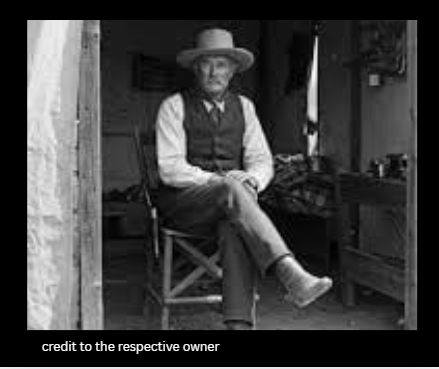In the 1920s, a noticeably older and more contemplative Wyatt Earp was captured in a photograph at his desert camp near the Happy Days gold mine, located just across the river from Parker, Arizona. By then, the once fiery lawman and gunfighter had largely distanced himself from the wild reputation he earned during his earlier years. Known primarily for his crucial role in the famed O.K. Corral shootout in Tombstone, Earp’s youth was marked by danger, high tension, and notoriety. Yet, this image portrays a man in a serene, introspective state, far removed from the violent chaos that once defined his life.
Earp’s twilight years in the Arizona desert stood in stark contrast to his earlier, action-packed career. Having witnessed and taken part in some of the most legendary episodes of the Wild West, he eventually sought solace in a quieter, more peaceful existence. The photograph reveals a survivor who had outlived many of his peers, reflecting on a life distant from the relentless conflicts of his past. While the legend of Wyatt Earp continued to grow in popular culture—through books, films, and stories—this tranquil moment beneath the desert sun symbolizes a period of personal reflection and the gradual fading of the Wild West era.
Even after retiring from public life, Earp’s larger-than-life image endured, shaping the narrative of the American frontier for generations. Yet, in this isolated desert camp, far from the bustling towns and saloons where he once made his name, Wyatt Earp was no longer the lawman of the O.K. Corral. Instead, he was simply a man who had survived one of the most turbulent chapters in American history, now at peace with the passage of time.
